- Author Matthew Elmers [email protected].
- Public 2023-12-16 21:49.
- Last modified 2025-01-24 09:17.
So we finally got to the castle of the opponents of the lords of Castelnau - the castle of Beinac. The place on which it stands - a high limestone rock about a hundred meters in height, unequivocally speaks of its attractiveness. Remember the Russian folk tale: "I stand high, I look far away!" Everything was exactly the same here. Archaeologists claim that people settled here in the Bronze Age, which is not surprising at all. Tourist brochures report that Beinac is the most impressive fortress in the entire Dordogne valley, and if there is an exaggeration, it is very small.
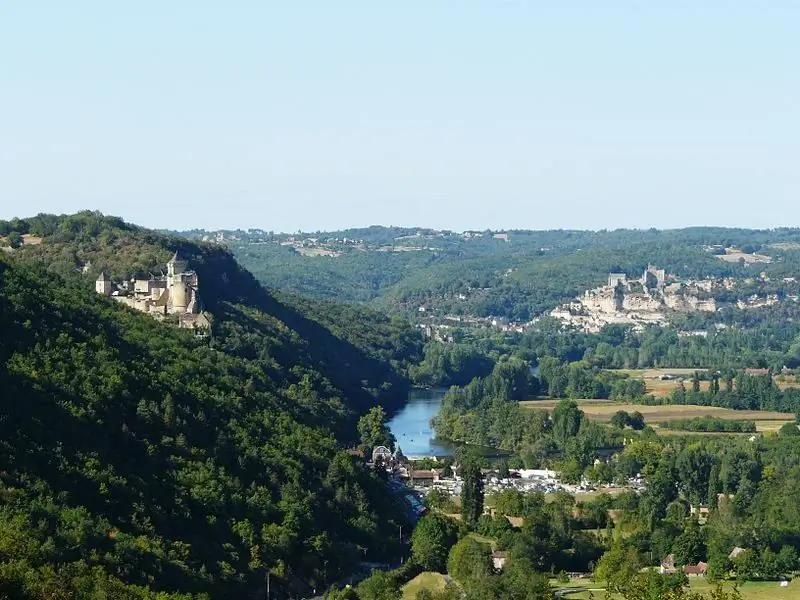
Two strongholds - everything is just like according to Tolkien: on the left is the castle of Castelnau, right in the distance is Beinak.
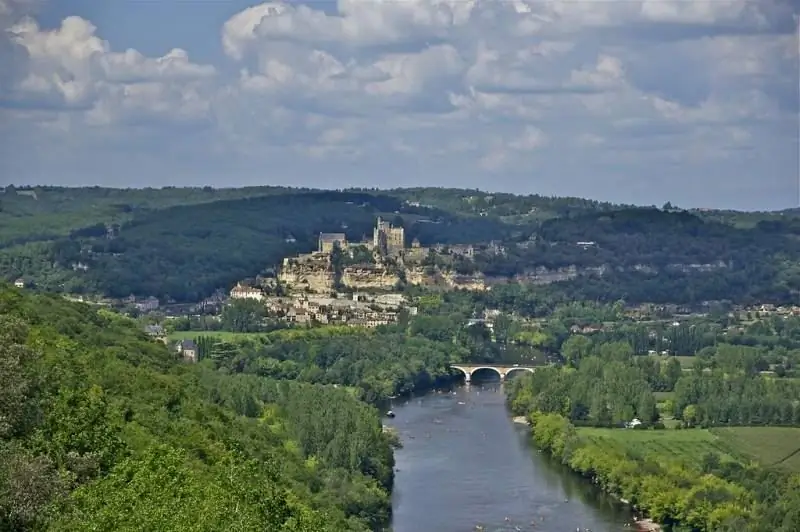
We are approaching Beinak …
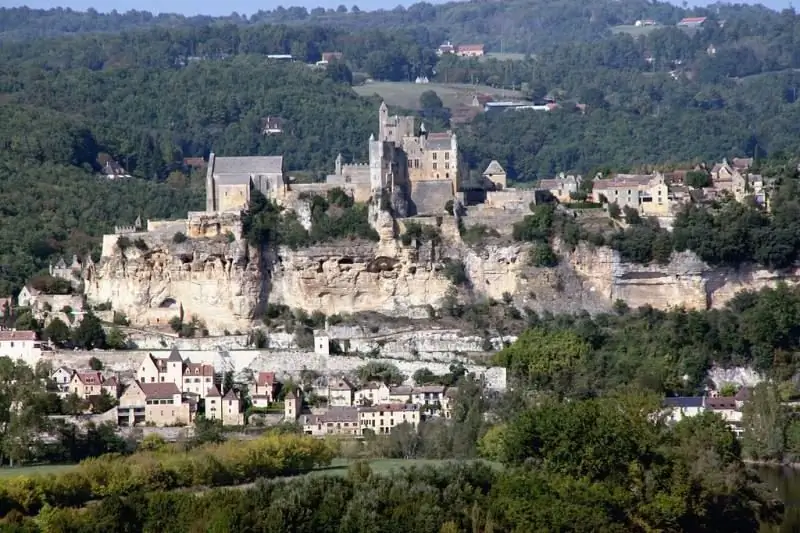
Even closer …

And now we are on the road at its foot. You can stay at the Bonn hotel (on the right).
It is known that for the first time the name of this castle was mentioned in the documents of 1115, due to the fact that the local feudal lords of Perigord, among whom was a certain Maynard de Beinac, donated the lands they owned to Robert d'Arbrissel, the founder of the Fontevraud monastery, so that, obviously, to serve him as a godly person. Here, and at about the same time, in a dense forest, that is, away from worldly temptations, another monastery was founded - Kaduin. And he, too, was given land, and the acts of donation are reflected in the cartulary of this monastery, and it is clear from them that the land holdings of the de Beinac family did not suffer from this, as they were very large.

There is hardly a person in his right mind who will climb these cliffs to storm this castle!
But by the will of fate, it turned out that the son of Meinard de Beinac, Ademar, who participated in the second crusade from 1146 to 1148, died, and did not leave a direct heir behind him. And it happened in the same year 1194, when King Richard the Lionheart returned from captivity.
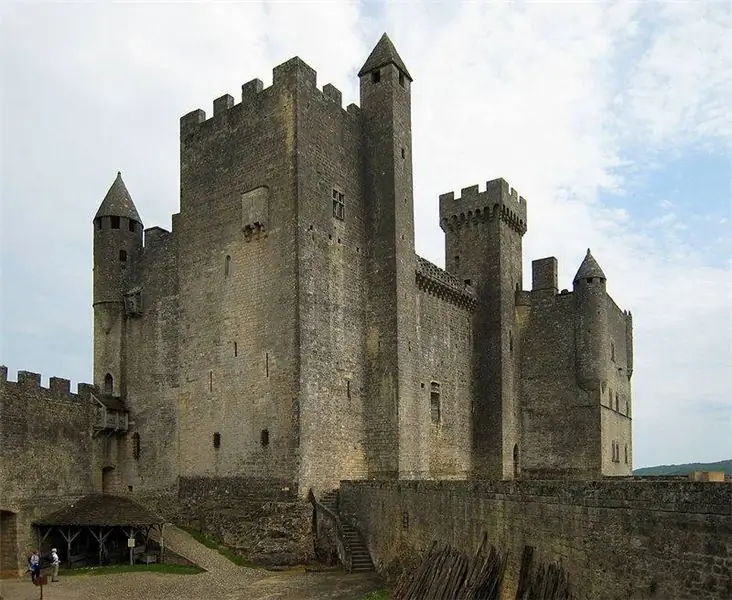
Usually at this time, the towers were preferred to be built round, since this way they better resisted the blows of the cannonballs of throwing machines. But here we see square towers. Note the loopholes in their walls and toilet cubicles. On the left is one of the entrances to the castle. Above it is a wooden "booth" for the guards.
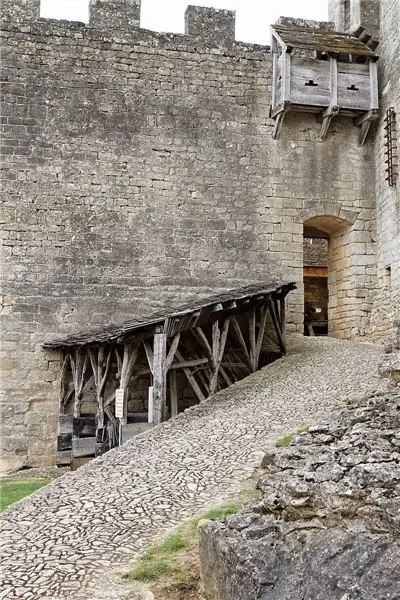
Here it is this "booth". Directly above the entrance. Holes were made in the floor to throw stones down.

"Square" in front of the castle. On the walls and towers there are stone mashikuli for the same purposes.
Naturally, such a fortress as Beinak could not be left neglected, in the sense that there was no husband devoted to you in it, and Richard the Lionheart presented Bainak to his adherent Mercadier, who in his absence controlled the castles of Aquitaine. He was delighted with the gift, but did not enjoy the property for long, since in 1200 Mercadier was killed in Bordeaux by another mercenary, and the castle again returned to the de Beinac family, now to the nephews of the aforementioned Ademar.
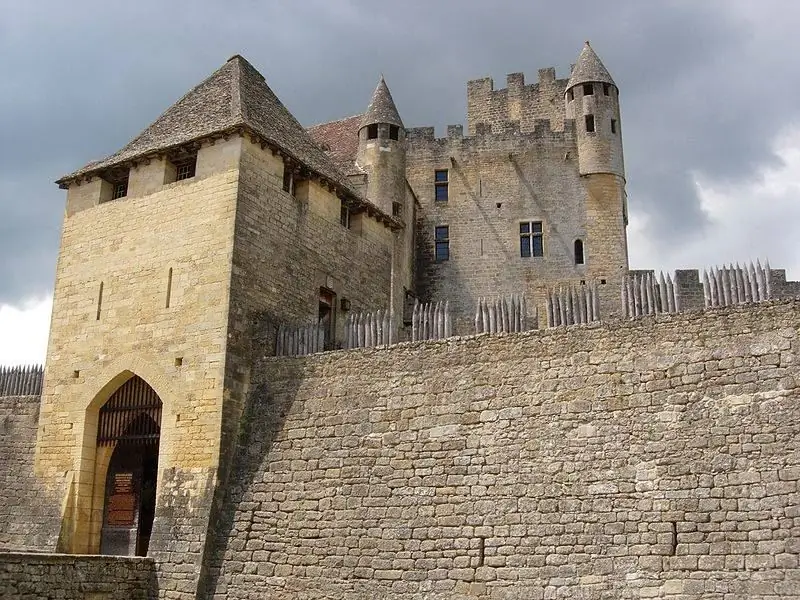
The entrance tower, protected by a moat and a descending lattice.
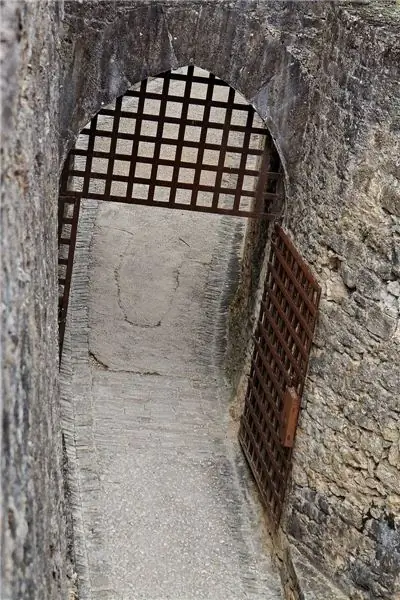
One of the many entrances and exits.
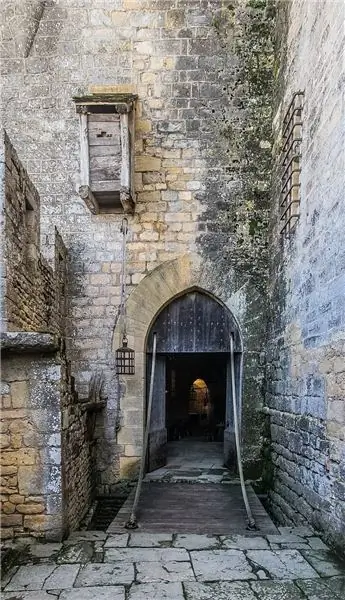
Here the entrance to the castle was closed by a suspension bridge. On the left is a guardhouse and a lamp hanging under it.
It didn't take long before the notorious Simon de Montfort appeared in the Dordogne Valley, who arrived here in September 1214 to eradicate the Cathar heresy. He captured the closest to Beinac castles of Montfort, Domme and Castelnau and finally found himself under its walls. Moreover, according to the chroniclers, the castle at that time belonged to "a cruel, furious robber and oppressor of the church." That is, the owner of the castle was ranked among the Cathars. The castle was taken by storm, half destroyed, but the Beynaki returned it a year later, and all de Montfort's people, whom he left in it, were exterminated. It would seem that there is a serious violation of feudal obligations, in fact, a rebellion against the king. However, the king of France for some reason supported Beinakov, and the castle remained to belong to their family. In addition, after this event, as the chronicles say, the de Beynac family finally learned the joys of wealth and a quiet life. So religion, most likely, had nothing to do with it. I liked the castle and the land, for it is known that the strong is always to blame. This was probably the case in this case as well.
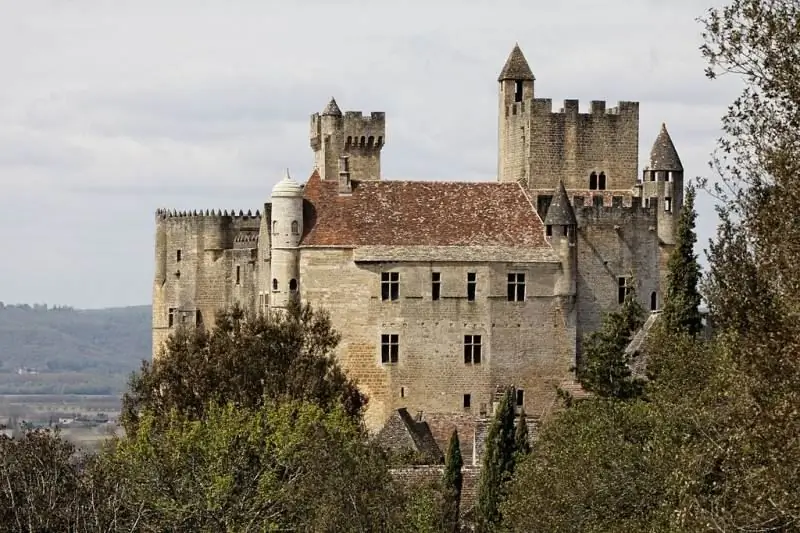
As you can see, the castle had many observation towers on all sides. So getting close to him unnoticed was not at all easy.
In 1241, the district of Beinac, where another castle, the Commark, stood, was divided by two brothers: Gayyard and Maynard de Beynac. But in 1379, the disparate possessions were again united into one - family affairs are sometimes inscrutable.
The owners of the castle and the surrounding lands were vassals of the Bishop of Sarlat, and, like himself, supported the King of France throughout the Hundred Years War. But the owners of the neighboring castle of Castelnau stood for the king of England. Moreover, if the castle of Castelnau was now and then subjected to attacks from the French, then the British, no one dared to attack Beinak. And in the end, namely in 1442, the lords of Beinac, united with several local barons, managed to expel the British from Castelnau. That is, in their centuries-old strife, they seem to have won …

One of these towers is at the corner of the keep. It must have been cold to hang out in them on duty in the winter and goggle around, whether enemies from Castelnau were coming to the castle, or the damned British led by the "Black Prince" himself. Probably, they saved themselves only with wine …
And then a series of "Wars for the Faith" began, when Protestants slaughtered Catholics, and Protestants Catholics, and the de Beinac family took part in this. Participated, but … it all ended with the fact that in 1753 there was no male heir in the family, and all their possessions in 1761 passed to the Beaumont family, when Marie-Claude de Beinac was married to the Marquis Christophe de Beaumont. So, after eight centuries, the Beinaki family disappeared, leaving behind only one impressive castle. Well, the Beaumons family, in turn, left it at the end of the 19th century. However, a distant descendant of it was found in the family, the Marquis de Beaumont, who again settled in the family nest, took up its reconstruction, but … went bankrupt, not calculating his strength. It was very difficult for individuals to maintain such a castle, so in 1944 it was classified as a historical monument, and the state began to maintain the castle. And then in 1962 the castle was bought from the state by a private person, Lucien Grosso, although the status of a historical monument was preserved for him. The castle was brought to an exemplary form by him, and tourists were allowed to visit it.
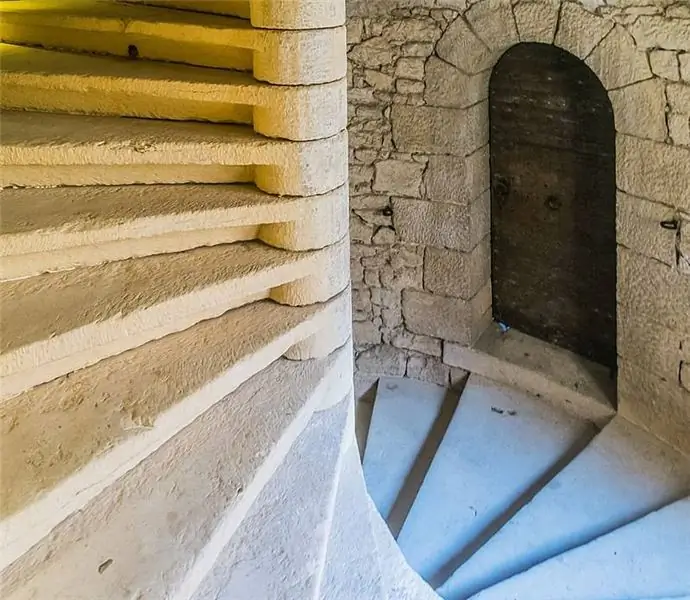
A spiral staircase inside a round tower.

And this is how the donjon looked from the inside.
At this castle you can (and should!) Study medieval defensive architecture. Already the sheer cliffs on which it was built were a reliable defense. Well, where the entrance to the castle was, double battlements were erected, double ditches, and one of them was deepened by a natural ravine, and two watchtowers.

The main hall is of typical Gothic architecture.

And this is a fireplace in this room, for some reason, decorated with bas-relief images of bull skulls. Well, very … an inspiring piece of art. Couldn't you have sculpted something more fun?
The oldest part of the castle was a massive square structure in the Romanesque style, in the walls of which loopholes were made, and watchtowers with narrow spiral staircases inside were attached to the walls.
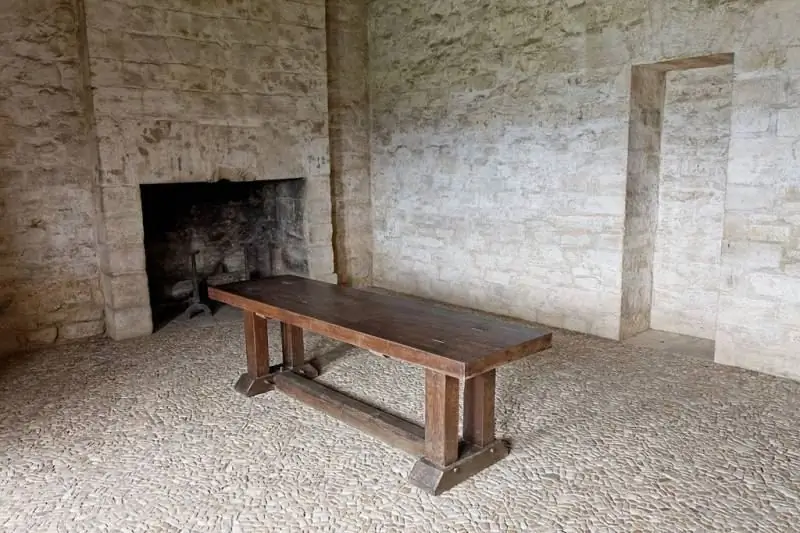
There are many fireplaces in the castle. Probably, the whole forest was burned in them. But the furnishings are clearly scarce.
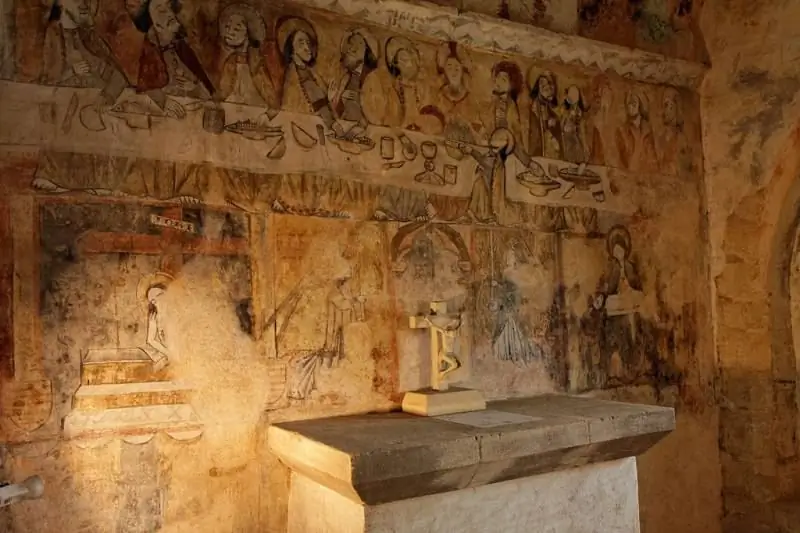
But the Last Supper is depicted on the wall of the chapel. Of course, this is not Leonardo da Vinci, but … a very curious example of medieval painting.

Kitchen. Well, it's just a movie to shoot. Everything is already ready!
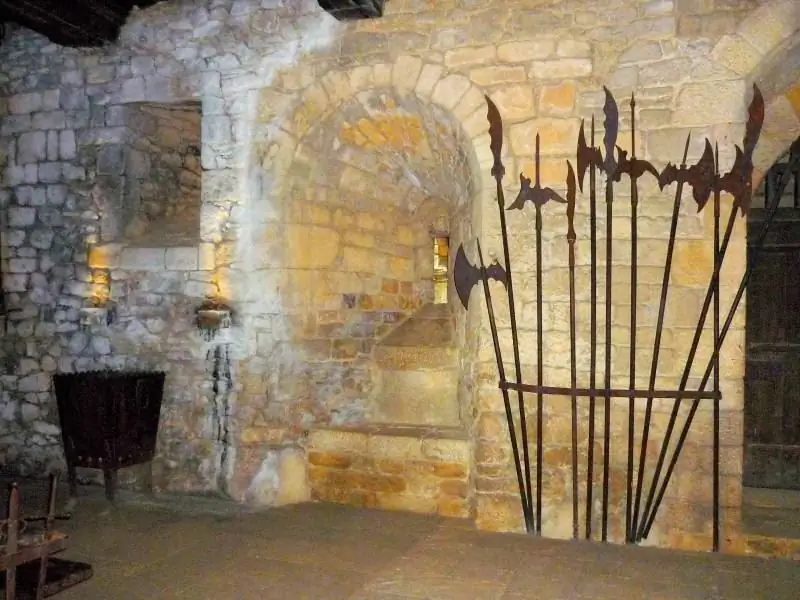
And a whole "bunch" of rusty iron for an amateur!
A number of castle buildings were rebuilt in the 16th and 17th centuries. But many of its buildings have survived from the XIV century and adjoin side by side with more modern ones. The chateau's rooms, open to tourists, have preserved woodwork and a painted ceiling from the 17th century. In the Main Hall of the Renaissance, fireplaces and a small entrance hall with 15th century frescoes have been preserved.
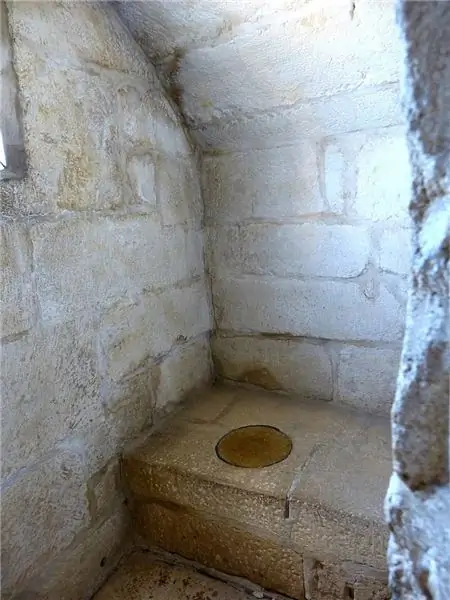
One of the castle toilets. But it doesn't work.
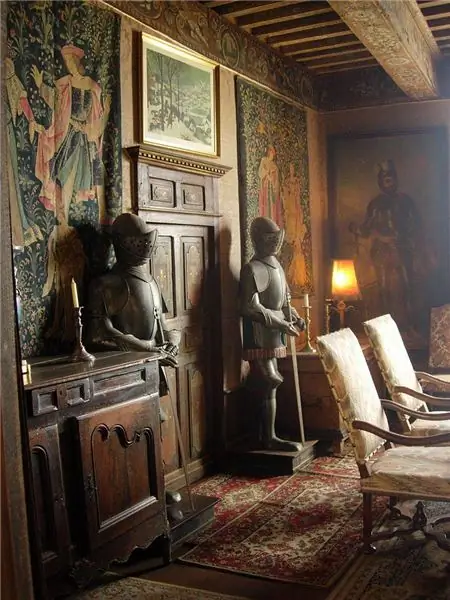
Some chambers of the castle look very impressive, but the armor is obvious remakes. You can see it even from here.

Well, these are traces of revolutionary barbarism. The family coat of arms was broken during the French Revolution.

There are different types of teeth on the walls. There are such…

And there are these. Whoever likes which more, he is photographed by those!
From the height of the towers and walls of the castle, a beautiful view opens up to the surroundings. However, it is not so easy to climb to it from the village of Benak-e-Kaznak located at its base. You will have to go uphill and uphill all the time, which is, unaccustomed, difficult for many.

House on one of the streets leading to the castle. However, all the streets leading up there lead to it, so it is impossible to get lost. You go and sing: "Higher and higher and higher …" So our people get to the castle!
Beynac Castle is also famous for the fact that many films were shot in it, including "Aliens" in 1993, "The Three Musketeers" with Bertrand Tavernier in 1994, "The Story of Eternal Love" with Andy Tennant in 1998 and "Jeanne d'Arc”by Luc Besson in 1999. The village at the foot of the castle also served as a filming location for the 2000 film Chocolate.
After seeing the castle from the inside, for a fee, you can rent a boat, swim on the Dordogne River and admire it from afar.
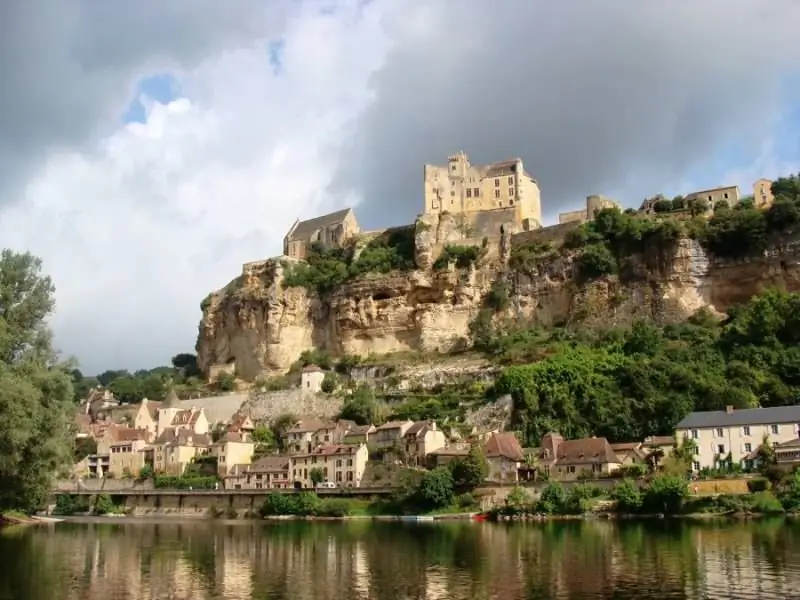
Very nice view, isn't it ?!






